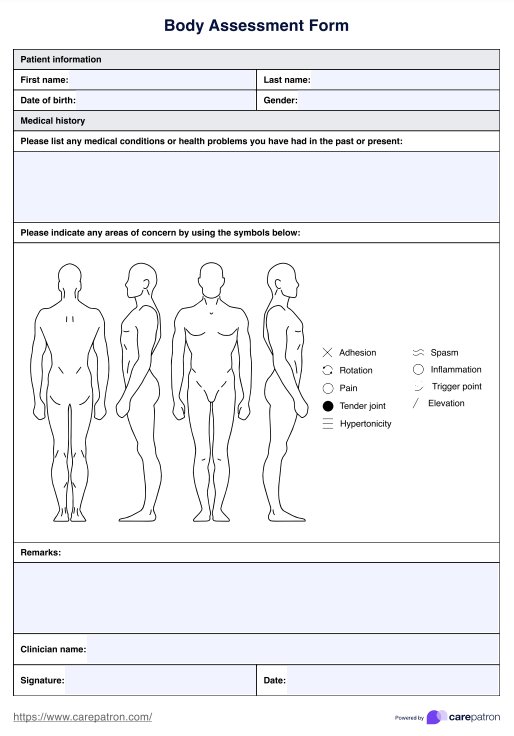To do a body assessment, you need to run a full analysis of the patient's presenting complaints regarding physical injuries and pain. You would want to explore a range of factors, including site, onset, characteristics, radiation, time duration, exacerbation factors, and severity. Feel free to follow any structure of symptom analysis, but this is where you can start.

Body Assessment Form
With a human body diagram, our Body Assessment Form will allow you to assess the symptoms and concerns of your patients for better clinical outcomes.
Body Assessment Form Template
Commonly asked questions
Body assessments are done to assess injuries or pain in the physical body. They help create comprehensive documentation and an understanding of the presenting symptoms during assessment, which allows a medical professional to create or adjust further treatment plans.
A typical body assessment focuses on any physical injuries to the body and aims to perform a full analysis of the injury. However, what is interpreted as physical pain can also be caused psychologically or referred pain, which adds more nuance to the body assessment. Clinicians should treat 'phantom' pain equally as a physical injury that is perceivable to the naked eye. They must also be aware of what appropriate assessment techniques to use.
EHR and practice management software
Get started for free
*No credit card required
Free
$0/usd
Unlimited clients
Telehealth
1GB of storage
Client portal text
Automated billing and online payments











